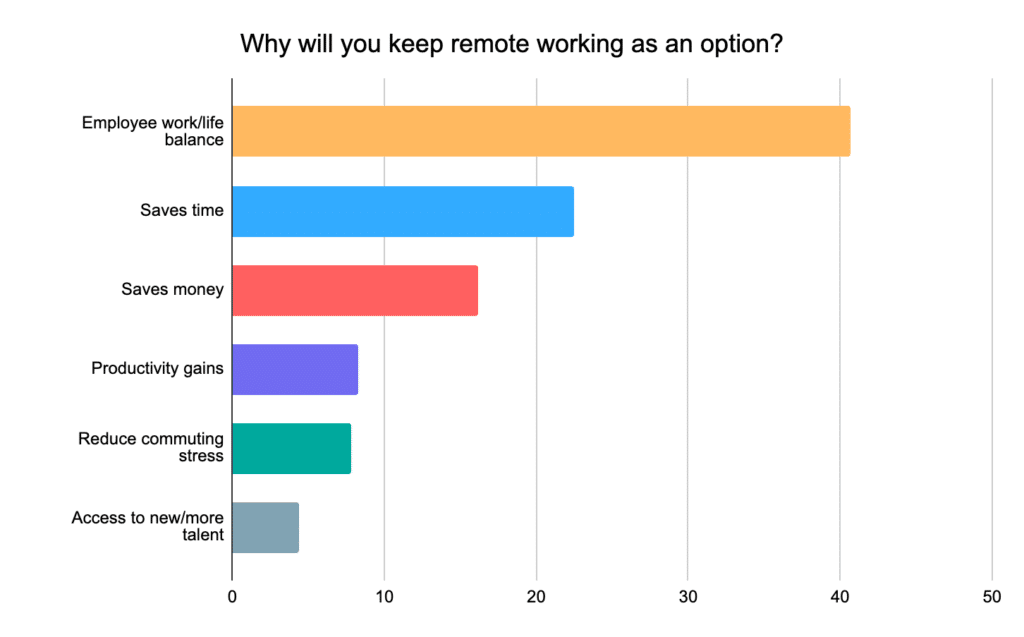Surveys are a common part of modern life. Whether it’s to find out how likely you are to do something, or how satisfied you were with an interaction, there seem to be surveys for almost everything these days. The main reason for that is simple: surveys are useful.
They offer the ability for the sender to collect information from their audience. However, surveys also empower respondents to share their thoughts and have their voices heard. I believe that’s what the youth call a “win-win.”
Though it’s common to get a survey, it’s not nearly as common to get any follow-up about the survey you took. You may remember the survey we sent out last month. In an effort to be transparent and accountable to the feedback so generously shared, we wanted to share the results with you.
Key takeaways
The goal of any survey, really, is to learn. Oftentimes information is seen as a competitive advantage. It makes sense. We all know the old adage “knowledge is power.” That said, since our community graciously offered up their insights, we wanted to pay it forward by sharing what we’ve learned.
Impact of COVID
Almost everyone surveyed was impacted by COVID in some way. Those in real estate and recruiting were the hardest hit with around 70% reporting a decrease in overall sales. Close behind were those in consulting and professional services, with 56% reporting a decrease. Overall, 51% reported a decrease in sales.
On the other hand, 21% reported an increase in sales, mostly commonly those in marketing agencies and tech companies.

We also asked about the most common barriers to selling. Budget cuts led the category with 56% citing that as a blocker. An unwillingness to commit to contracts (39%), and an elongated sales cycle (38%) round out the top three reported barriers.
As for ways to combat those barriers, outbound selling was mentioned by 38% as the thing that’s working best right now. Now is a good time to pick up the phone and start calling. Only 14% said it’s been difficult to reach decision makers, and only 10% said customers have no time for meetings.

Finally, we found most everyone is optimistic about the future. 71% said they expect sales to go up over the next 12 months. Consulting (81%) and tech companies (79%) were most optimistic, while agencies (63%) and professional services (63%) were a bit more conservative in their outlook.
Remote working
One of the biggest changes for a lot of us was switching to working from home. Based on our data, it doesn’t seem that will change anytime soon. In fact, only 3% reported they plan to go back to being 100% in-office.
49% will either be fully or mostly remote going forward. Agencies were the most likely segment to switch to remote working permanently.

The most common reason to adopt the change permanently is for employee work/life balance. 41% chose that as the top reason. The second most popular reason is saving time (23%)
Somewhat surprisingly, only 16% cited budget savings as a reason to switch to remote working. For reference, working from home, on average, saves employees $4,000 annually and saves employers around $11,000 annually per employee.

We also found that Qwilr is a key tool for those switching over to remote work. 81% said Qwilr is very, or somewhat, important for selling remotely. This was, of course, one of our favorite findings of the survey — we’re very happy to hear that Qwilr has been so useful here!
Content preferences
One of the final pieces of information we asked for was about content preferences. According to responses, the most preferred content format is blog content (34%) followed closely by video (28%) and webinars (27%).
In terms of topics, it sounds like folks want to hear about product updates (58%), sales skills (46%), and marketing skills (45%). There also seems to be a healthy interest in help using Qwilr (43%) and sales operations (30%).

We were also interested to know how people were finding content. The top answer by far was social media at (49%). From there it was news outlets (24%), newsletters (17%) and “other” (9%). Nationally, the breakdown for news sources is similar for people 49 and under.
Next steps
As I mentioned at the beginning, surveys are popular because they’re useful. However, collecting information is only the first step in making a survey a success. If the data collected doesn’t help you take action, then it’s hard to deem it a success.
Moving forward, we’ll be creating more content based on what we heard here. If you have a topic that you’d like to see covered, send us an email at content@qwilr.com anytime.
We also heard a few requests for new features or product improvements, particularly around PDF updates and a better way to organize images. These are common requests we’ve heard from users for a while, and we’ll be working on at least one of these over the quarter — stay tuned!
Lastly, we wanted to leave you with a few resources based on what you told us you’d like to see most.
Product updates
- Read all about our recent update with Loom
- Sign up for our newsletter to get Qwilr updates and new content every month
We all know the saying “knowledge is power.” We promise not to let that power go to waste.


